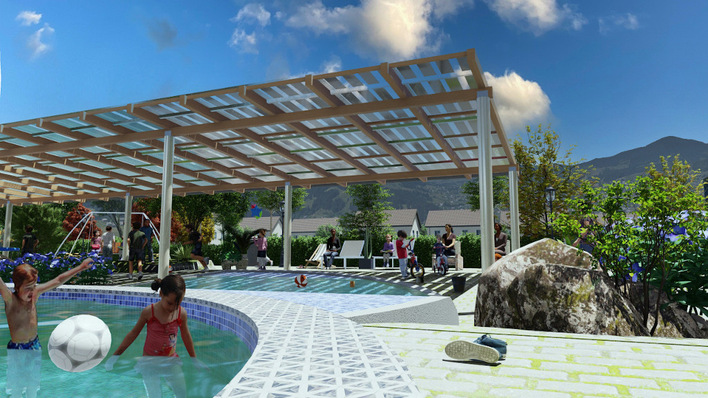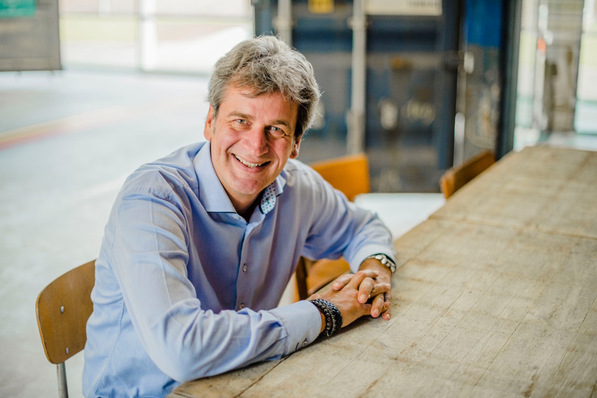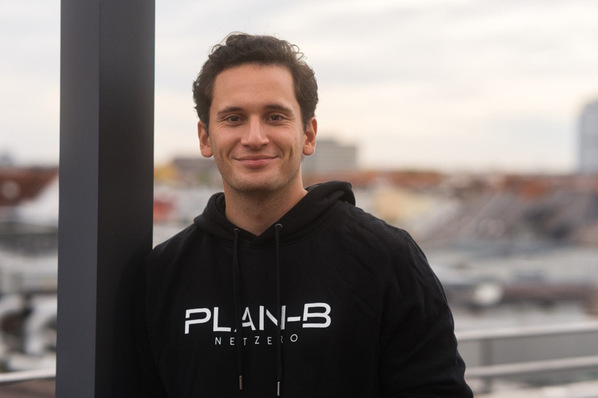As an individual visitor, in all the crowds of other visitors, it can be difficult to get to the appropriate contact persons at the stand of a manufacturer and then have them explain the products to you. For a participant of one of the pv Guided Tours, that is not the case: The manufacturer’s sales representative or technology expert explains the company’s innovations in detail and in an understandable way.
Headsets make everything easy to hear, even if you are not face-to-face with the company representative. And if there is something that is unclear – there is always time for questions, even very specific questions will be answered by the experts. And even if some questions are still open at the end of the tour, there is always the option of returning to a manufacturer’s stand later. And that is the reason why the pv Guided Tours at The Smarter E are increasingly popular: More than 500 visitors participated at this year’s tours, both in German and in English.
This year, the tour on innovations in DC generators not only included panel manufacturers. One highlight, especially for installing companies, was the system for error detection in solar panels developed by Solartektor.
Solartektor: Servicing made easier
A laser impulse is fired at the solar panels and an audio signal shows immediately whether the panel that is thus addressed works properly or not. This allows the detection of insulation faults, short-circuited bypass diodes, line breaks or wrongly wired panels, independent of daylight and without requiring expensive assembly.
Also, it becomes possible to reconstruct missing string diagrams with minimal effort. This makes servicing easier, because although a faulty string will show up in the monitoring, precisely locating the fault usually takes a lot of time. This explains why this system that comes with all the necessary equipment in one carrying case caught so much attention.
The Swiss company Solaxess also is not strictly a manufacturer of solar panels but offers a process by which solar panels can be coated in a white or otherwise lightly coloured film, thus making them suitable for a wide range of architectural applications as facades.
Solaxess: The look of a bright facade
After all, neither architects nor everyone else likes a city full of walls covered in dark solar panels. In the opening words of Peter Roethlisberger of Solaxess to the tour groups arriving at his stand: “As you can see, there is nothing to see.”
The company makes a plastic film that is treated using nanotechnology. It filters out the visible from the invisible wavelengths of light. The visible light is reflected while the invisible is allowed to pass through and interact with the solar cells. This creates bright solar panels that do not recognisable as such but still generate a respectable output: 100 to 106 watts per square metre in white and up to 120 watts for a light grey version.
However, it is not possible to retrofit panels with the film, as the application requires heating the panel glass. The film is related to Teflon, is non-reflective and also helps to prevent over-heating of the panels. Treated panels show output reductions of about 35 percent.
Luxor: Poly and mono half-cell
This year, Luxor Solar was particularly keen to present their half-cell panels as part of their Ecoline series. In doing so, the company is following a current trend: Companies are increasingly offering this category of product. Cutting the cells in half also halves the resistance at the cell level and therefore makes it possible to generate a few extra watts from the same panel area.
Luxor offer these products with 120 half cells both as poly-crystalline and mono-crystalline versions. For poly-crystalline cells outputs vary between 280 and 300 watts, while the mono-crystalline version can achieve up to 330 watts.
When it comes to combining panels with a power optimiser, Luxor is particularly versatile: Solar Edge as well as the Tigo TS40 are compatible with Luxor panels. This allows installing companies to be genuinely flexible when it comes to customers’ demands.
On the subject of Luxor’s glass-glass panels, head of sales Thomas Dessoi elicits a grin from the participants when he jokes: “You could take this panel to go surfing.”
Of course, this is not meant to be taken literally, but the Secure Line frameless glass-glass panels do deserve to be taken note of. To protect it from intruding moisture, this panel is sealed using a thermosealing method.
In addition, PVB films are used, which gives the finished product a greater residual load capacity and a higher rate of transmission. This, in turn, generates greater output, as the panels perform better under conditions of low light than comparable products.
Luxor’s frameless Secure Line glass-glass panels have a product warranty of 35 years and for that same time period, the company guarantees 88,5 percent of the initial output. After such an extremely long time, a 300-watt panel would still have an output of 270 watts.
Axsun: Small is beautiful
Axsun have made the niche markets their own. Yes, this company from Upper Swabia also produces standard panels that are extremely durable and look attractive, but their focus is on custom solutions. These include panels of any geometric shape and panels with openings or recesses, for example to fit a chimney.
Because of the flexibility and the amount of manual labour in their manufacturing process, they are able to individually satisfy customers wishes when it comes to looks and design, as well as even build very small panels. The only condition: The panels have to have at least 100 watts in order to activate the connector socket. If there are too few cells, it is possible to integrate a dummy panel.
According to CEO Viktor Kostjak, installing companies are particularly interested in panels with 54 cells, because they are easier to handle while on the roof. The product range also includes roof-integrated panels with a Solrif frame.
All Axsun panels can optionally be fitted with an integrated power optimiser by Solar Edge. A comprehensive quality control ensures the consistently high quality of the products that come out of Laupheim-Baustetten. With a number of renowned research institutes, the company is currently working on developing coloured panels, first prototypes of which were also on display at Axsun’s stand in Munich.
Jinko: Optimising the cell strings
The panel manufacturer Jinko Solar is one of the giants of the industry. 15,000 staff in eight locations in China, Malaysia, Portugal and South Africa produce ingots, cells and panels. Production capacity for panels was a little under 10 gigawatts in 2017. One of the highlights of this year’s Intersolar was the Eagle 60 MB MX2, a panel with included cell string optimisers, where MX stands for ‘maximiser’.
Jinko’s technicians have replaced the Schottky diodes of the connector socket with optimisers that are integrated into each of the three cell strings. This chip individually and independently calculates the MPP point for each cell string: In case of shading, it reduces the voltage in the cell string and increases the current so that the current in the entire string remains constant. This very much reduces the losses resulting from shading, ageing effects or dirt. One other benefit: An inexpensive inverter with just one MPP tracker will do. The MX technology can be employed regardless of the cell type that is used.
The half-cell panel Eagle HC 60 M is another innovation from Jinko. It is available with poly, mono or mono-PERC cells, with the mono version generating 300 to 230 watts. In addition to the reduced resistance inherent in the half-cell technology that brings increased output, this product has the cells spaced more widely and a white back sheet. That allows the reflection of unabsorbed light back onto the cell, which in turn generates a higher yield from the panel. The panel has three connector sockets on its rear side, and shorter cables are supposed to further reduce losses due to resistance. If required, the cables are also available in the normal length.
The logical progression from panels with five busbars are multi-busbar panels. In Jinko’s case this is the Eagle MBB 60P with 12 of them. This polycrystalline panel with 60 cells achieves an efficiency of 17.2 percent and generates between 270 and 290 watts. Mass production will start towards the end of this year. (Petra Franke)
Watch our pv Guided Tours on DC generator:
http://www.pveurope.eu/Videos/pv-Guided-Tours-videos-2018
Stay informed, get our newsletter twice a week.
Register here: http://www.pveurope.eu/Newsletter
Read more about solar modules.
Read more about solar mounting systems.
Read more about solar energy storage.







